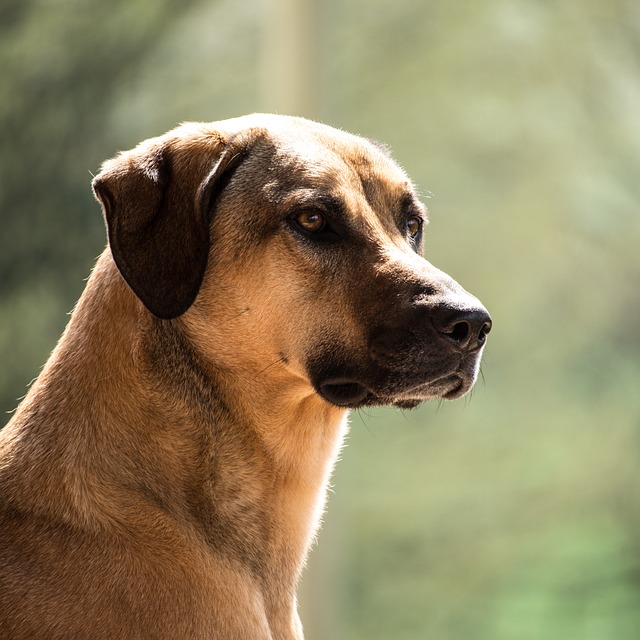


The Kangal Dog is a powerful, protective, and large breed known for its strong guarding instincts and gentle nature with its family. Originally from Turkey, the Kangal is primarily a livestock guardian dog, bred to protect flocks from predators such as wolves, bears, and other large animals. While they are naturally protective, they are also loyal and affectionate towards their family. Their calm demeanor, combined with their alertness and intelligence, makes them excellent guardians and devoted companions.
The Kangal Dog originates from the Sivas region of central Turkey, where it has been used for centuries as a livestock guardian. These dogs were bred to protect sheep and other livestock from predators, and their protective instincts were honed over many generations. The Kangal is named after the village of Kangal in Turkey, where the breed was first developed. Historically, the Kangal was highly valued by Turkish shepherds for its ability to fend off predators while remaining calm and gentle around the flock. The breed has been an integral part of rural life in Turkey, and it is considered a national treasure. Although relatively rare outside of Turkey, the Kangal is gaining recognition around the world as a capable guardian and loving family pet.
The Kangal Dog is a large, muscular breed with a well-proportioned body designed for strength and agility. They typically stand between 28 to 32 inches tall at the shoulder and weigh between 90 to 150 pounds, with males being larger than females. The breed has a thick double coat that is typically short to medium in length, with colors ranging from pale tan to a more golden hue. Their coat helps protect them from harsh weather conditions and predators. Kangal Dogs have a broad, powerful head, a large black mask around their eyes, and erect ears that add to their commanding appearance. Their tail is thick and curls over their back, completing their impressive physique. The breed is known for its large, strong bite force, which is one of the strongest of any dog breed.
The Kangal Dog is known for its calm, independent, and protective nature. They are naturally wary of strangers but are deeply loyal to their family. While they can be aloof with people they don't know, they are affectionate and gentle with their owners, especially children. Kangal Dogs have a strong protective instinct, and their primary role is to guard their flock. They are not overly aggressive but are confident and assertive when they perceive a threat. This breed tends to be calm and composed in most situations, making them excellent guardians without being overly reactive. They are intelligent and independent, which can sometimes make training a bit challenging, but they are generally easy to bond with due to their loyalty and devotion to their family.
The Kangal Dog is an active breed that requires regular exercise to stay healthy and happy. While they are typically calm and laid-back at home, they need space to move around and be active. A secure, fenced yard is ideal for this breed, as they enjoy roaming and patrolling their territory. Kangal Dogs thrive on physical activities like long walks, hikes, and running, as well as engaging in mental stimulation. However, they are not as hyperactive as some other breeds, and a couple of good walks a day, along with some free time in the yard, should suffice. It is important to note that the Kangal is accustomed to living in large, open spaces and may not do well in apartments or small homes without enough outdoor space to roam and patrol.
Training the Kangal Dog can be challenging due to their independent nature and strong guarding instincts. They are intelligent and can learn commands, but they may not always be eager to please in the same way as other breeds. Early socialization is essential to ensure that they are well-adjusted around other animals, people, and different environments. Kangal Dogs need to be exposed to various situations, sounds, and people from a young age to prevent them from becoming overly territorial or aggressive. Positive reinforcement methods work best with this breed, and it is important to establish clear leadership and boundaries. While they are protective, they are not overly aggressive if properly trained and socialized, and they tend to be very loyal and responsive to their family.
The Kangal Dog is generally a healthy breed with few major health issues. However, like all large dogs, they are prone to conditions such as hip dysplasia, elbow dysplasia, and bloat (gastric torsion). Regular veterinary check-ups are important to monitor their health, especially as they age. The breed's thick coat requires regular grooming to keep it in good condition, but it is relatively low-maintenance compared to other long-haired breeds. Brushing once a week is usually sufficient to remove loose hair and prevent matting. The Kangal Dog’s ears should also be checked regularly for any signs of infection, and their nails should be trimmed as needed. Additionally, their diet should be appropriate for their large size to maintain their weight and overall health.
The Kangal Dog has a lifespan of around 12 to 15 years, which is typical for a large breed. With proper care, including regular exercise, a balanced diet, and routine veterinary visits, they can live a long and healthy life. As a large dog, they may experience some age-related issues, such as joint problems, so it is important to monitor their health as they age and make any necessary adjustments to their diet or exercise routine.
© copyright Dog Compendium 2024 - 2025